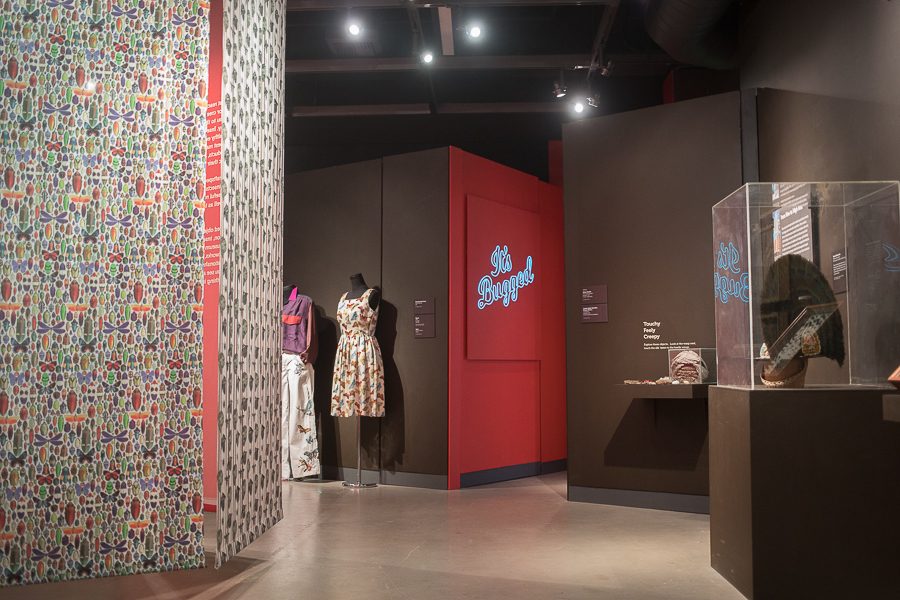
Art to give you butterflies in your stomach
The phrase often goes that “art is all around us.” If one counts a bug as a medium or representation of art, then there are 10 quintillion individual examples and 30 to 40 million species of such art. That’s a lot of art.
“It Bugged: Insects’ Role in Design,” an art and design installation, is currently on display in the UC Davis Design Museum, located in Cruess Hall. The exhibit features work from the JoAnn C. Stabb Design Collection, insect specimens from the UC Davis Bohart Museum of Entomology and original work from faculty and students — all of which incorporate bugs either in design or in the production of raw materials.
Placed all around the small exhibit are various insect specimens (in glass cases, don’t worry), not only adding a sense of context and scientific legitimacy to the exhibit but also placing these bugs as art themselves. Without having to face the potential of being stung or touched by one of these insects, their bodies, wings, legs and antennae become fascinating to study. Their colors are bold, their bodies and legs oddly shaped. Inspecting such bodily details and comparing them side by side with other bugs took up the vast majority of my time in the exhibit.
By emphasizing the physical bug as a piece of art, the stage is set for a grander appreciation — if they themselves are spectacular, what they produce is even more so. Ann Savageau’s stand-out piece of the exhibit was her “Wasp Trilogy,” which utilized paper made of hornets’ nests. Each piece of her trilogy layers the wasp paper to create an intricate swirling design with an open space in the center. One could speculate that such open space is the central nature of bugs in our ecosystem and the various ways they take form and importance.
Savageau also had “Totems” located in the back of the exhibit. While credit is due to the artist for her embellishment and paint work, the main attractions of the piece — the etchings “carved” on the large tree branches — are made naturally by the larvae of beetles in the Sierra Nevada Mountains. No two totem poles looked the same, each etching with a different thickness or line shape.
In addition to celebrating the natural beauty that bugs produce, it should be noted how humans utilize their talents. The process of extracting silk from silk bugs was emphasized in the exhibit, as well as the significant role bugs have in the creation of red dye. Indeed, bugs produce carminic acid as a defence mechanism, which can also act as a natural red dye. Two silk Asian robes and a bright red “Peruvian Highland Textile” display demonstrate the end product of using these two raw, bug-made materials, respectively. Bugs then become a part of our creative process, a necessary means in the beauty that we create.
This exhibit illustrates the centrality of bugs in our society. Even the sheer number of bugs that share the Earth with us puts into perspective how great in quantity they are needed for a functioning ecosystem. Moreover, through our interactions with them, they have gained a place in our modern society: from the functional use of fabric development to the natural beauty that they help produce, they hold a pinnacle role. While these roles can be overlooked and all too often taken advantage of, “It’s Bugged” makes one appreciate our small insect friends and the beauty they add to our experience. No if, ands or bugs about it.
The installation is open until April 22 and is free of charge. More information can be found on the UC Davis Arts Administrative Group’s website.
Written by: Caroline Rutten — arts@theaggie.org



